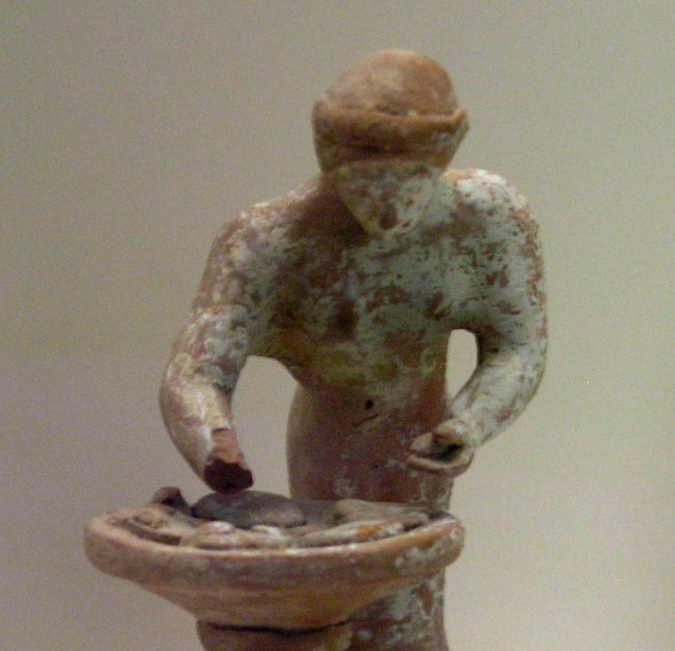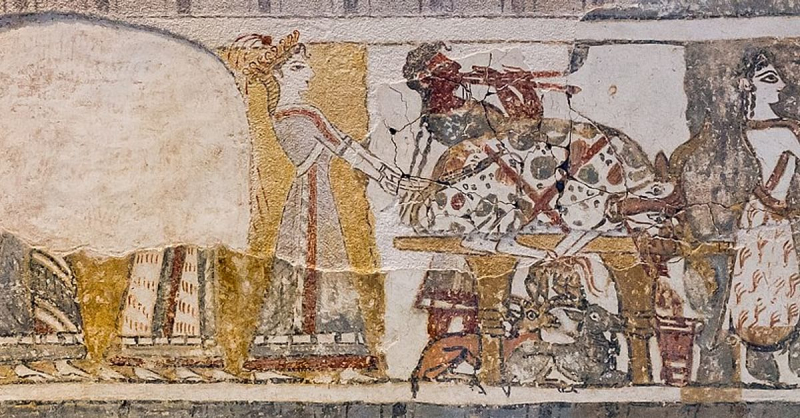Bread and cake
The most popular Ancient Greek foods are bread and cake. Commercial bakeries were well known and widespread when Rome conquered Greece in the third century B.C. Indeed, Pliny the Elder claims that the work of skilled artisans shifted bread production from the family to the "industrial" (according to Pliny, starting from 171 BC). Plato favored home production over commercial production, and in Gorgias, Thearion the baker is described as an Athenian novelty who sells goods that can be made at home.
Bread in ancient Greece was served with opson ὄψoν, which is sometimes translated as "relish" in English. This was a catch-all term for anything that went with this staple food, whether it was meat, fish, fruit, or vegetables.
Cakes may have been consumed for both religious and secular reasons. Philoxenus of Cythera describes some cakes eaten as part of an elaborate dinner in the traditional dithyrambic style used for sacred Dionysian hymns: "mixed with safflower, toasted, wheat-oat-white-chickpea-little thistle-little-sesame-honey-mouthful of everything, with a honey rim". The charisios were eaten at the "all-night festival," according to Athenaeus, but John Wilkins observes that the line between sacred and secular might be blurred in antiquity. Melitoutta (Ancient Greek: μελιτοῦττα) was a honeycake mentioned by ancient writers.












